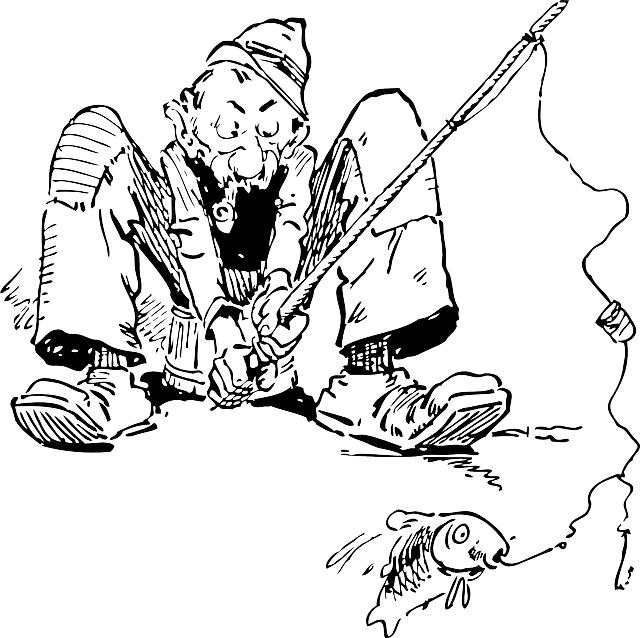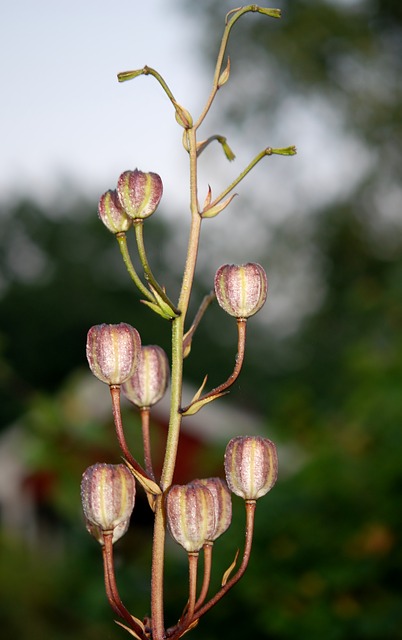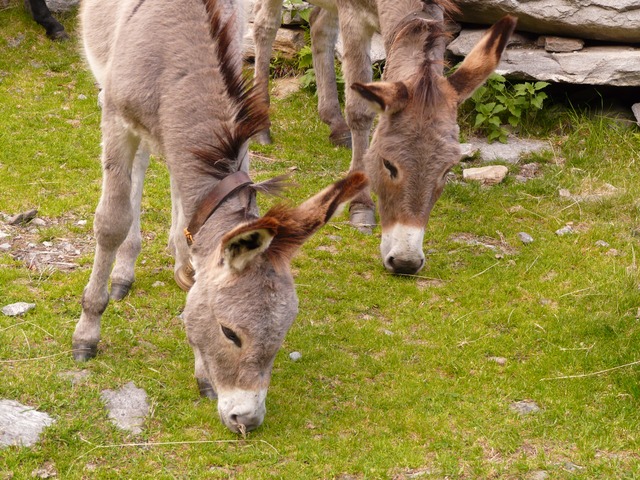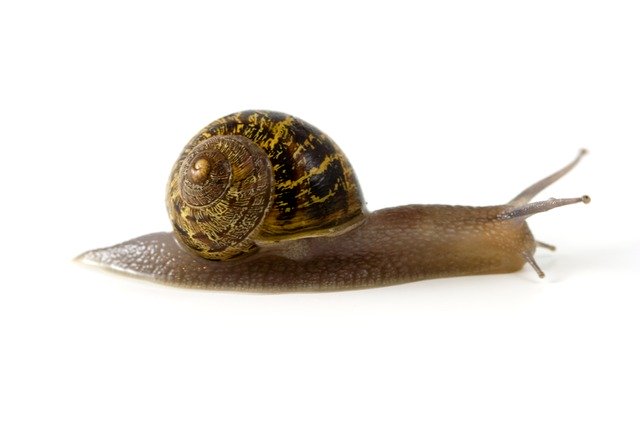الأسر الحاكمة في التاريخ الصيني
|
|
هذه الموضوعة تحتوي على كتابة منغولية. بدون دعم العرض المناصب، فقد ترى علامات استفهام، مربعات، أورموز أخرى بدلاً من نص بالكتابة المنغولية. |
|
| |||||||
|---|---|---|---|---|---|---|---|
| القديم | |||||||
| السادة الثلاثة والأباطرة الخمسة | |||||||
| أسرة شيا 2070–1600 ق.م. | |||||||
| أسرة شانگ 1600–1046 ق.م. | |||||||
| أسرة ژو 1122–256 ق.م. | |||||||
| ژوالغربية | |||||||
| ژوالشرقية | |||||||
| فترة الربيع والخريف | |||||||
| فترة الممالك المتحاربة | |||||||
| الامبراطوري | |||||||
| أسرة تشين 221 ق.م.–206 ق.م. | |||||||
| أسرة هان 206 ق.م.–220 م | |||||||
| هان الغربية | |||||||
| أسرة شين | |||||||
| هان الشرقية | |||||||
| الممالك الثلاث 220–280 | |||||||
| وِيْ, شوووو | |||||||
| أسرة جين 265–420 | |||||||
| جين الغربية | |||||||
| جين الشرقية |
16 مملكة 304–439 |
||||||
| الأسر الجنوبية والشمالية 420–589 | |||||||
| أسرة سوي 581–619 | |||||||
| أسرة تانگ 618–907 | |||||||
|
عشرة ممالك 907–960 |
أسرة لياو 907–1125 |
||||||
|
أسرة سونگ 960–1279 |
|||||||
| سونگ الشمالية | شيا غ. | ||||||
| سونگ الجنوبية | أسرة جين | ||||||
| أسرة يوان 1271–1368 | |||||||
| أسرة مينگ 1368–1644 | |||||||
| أسرة تشينگ 1644–1911 | |||||||
| المعاصر | |||||||
| تاريخ جمهورية الصين 1912–1949 | |||||||
| الصين الشعبية 1949–للحاضر |
جمهورية الصين |
||||||
|
منطقات ذات صلة
| |||||||
From the inauguration of dynastic rule by Yu the Great in circa 2070 BC to the abdication of the Xuantong Emperor on 12 February 1912 in the wake of the Xinhai Revolution, China was ruled by a series of successive dynasties. Dividing the history of China into periods ruled by dynasties is a common method of periodization utilized by scholars.
مصطلحات
The following is a list of terms associated with the concept of dynasty in Chinese historiography:
- cháo (朝): a dynasty
- cháodài (朝代): an era corresponding to the rule of a dynasty
- wángcháo (王朝): while technically referring to royal dynasties, this term is often inaccurately applied to dynasties whose rulers held non-royal titles such as emperor
- huángcháo (皇朝): generally used for imperial dynasties
التاريخ
بداية نظام الأسر الحاكمة الصينية
As the founder of China's first dynasty, the Xia dynasty, Yu the Great is conventionally regarded as the inaugurator of dynastic rule in China. In the Chinese dynastic system, the sovereign ruler theoretically possessed absolute power and private ownership of everything within his/her realm. This concept, known as jiā tiānxià (家天下; "All under Heaven belongs to the ruling family"), was in contrast to the pre-Xia notion of gōng tiānxià (公天下; "All under Heaven belongs to the public") whereby leadership succession was non-hereditary.
قائمة الأسر الصينية الرئيسية
هذه القائمة تضم فقط الأسر الرئيسية في الصين توجد نمطياً في صيغ مبسطة من الخطوط الزمنية للتاريخ الصيني.
| الأسرة | البيت الحاكم | فترة الحكم | الحكام | |||||||
|---|---|---|---|---|---|---|---|---|---|---|
| Name (English / Chinese / Pinyin / Bopomofo) |
Origin of name |
Surname (English / Chinese) |
Ethnicity | Status | Year | Term | Founder | Last monarch | List | |
| Semi-legendary | ||||||||||
|
Xia dynasty 夏朝 Xià Cháo ㄒㄧㄚˋ ㄔㄠˊ |
Tribal name | Si 姒 |
Huaxia | Royal | 2070–1600 BC | 430 years | Yu of Xia | Jie of Xia | (list) | |
| Ancient China | ||||||||||
|
Shang dynasty 商朝 Shāng Cháo ㄕㄤ ㄔㄠˊ |
Toponym | Zi 子 |
Huaxia | Royal | 1600–1046 BC | 554 years | Tang of Shang | Zhou of Shang | (list) | |
|
Western Zhou 西周 Xī Zhōu ㄒㄧ ㄓㄡ |
Toponym | Ji 姬 |
Huaxia | Royal | 1046–771 BC | 275 years | Wu of Zhou | You of Zhou | (list) | |
|
Eastern Zhou 東周 Dōng Zhōu ㄉㄨㄥ ㄓㄡ |
From Zhou dynasty | Ji 姬 |
Huaxia | Royal | 770–256 BC | 514 years | Ping of Zhou | Nan of Zhou | (list) | |
| Early Imperial China | ||||||||||
|
Qin dynasty 秦朝 Qín Cháo ㄑㄧㄣˊ ㄔㄠˊ |
Toponym | Ying 嬴 |
Huaxia | Imperial (221–207 BC) Royal (207 BC) |
221–207 BC | 14 years | Qin Shi Huang | Qin San Shi | (list) | |
|
Western Han 西漢 Xī Hàn ㄒㄧ ㄏㄢˋ |
Toponym & Noble title | Liu 劉 |
Han | Imperial | 202 BC–AD 9 | 210 years | Gao of Han | Liu Ying | (list) | |
|
Xin dynasty 新朝 Xīn Cháo ㄒㄧㄣ ㄔㄠˊ |
"New" | Wang 王 |
Han | Imperial | AD 9–23 | 14 years | Wang Mang | Wang Mang | (list) | |
|
Eastern Han 東漢 Dōng Hàn ㄉㄨㄥ ㄏㄢˋ |
From Han dynasty | Liu 劉 |
Han | Imperial | AD 25–220 | 195 years | Guangwu of Han | Xian of Han | (list) | |
|
Three Kingdoms 三國 Sān Guó ㄙㄢ ㄍㄨㄛˊ |
AD 220–280 | 60 years | (list) | |||||||
|
Cao Wei 曹魏 Cáo Wèi ㄘㄠˊ ㄨㄟˋ |
Noble title | Cao 曹 |
Han | Imperial | AD 220–266 | 46 years | Wen of Cao Wei | Yuan of Cao Wei | (list) | |
|
Shu Han 蜀漢 Shǔ Hàn ㄕㄨˇ ㄏㄢˋ |
From Han dynasty | Liu 劉 |
Han | Imperial | AD 221–263 | 42 years | Zhaolie of Shu Han | Xiaohuai of Shu Han | (list) | |
|
Eastern Wu 東吳 Dōng Wú ㄉㄨㄥ ㄨˊ |
Noble title | Sun 孫 |
Han | Royal (AD 222–229) Imperial (AD 229–280) |
AD 222–280 | 58 years | Da of Eastern Wu | Sun Hao | (list) | |
|
Western Jin 西晉 Xī Jìn ㄒㄧ ㄐㄧㄣˋ |
Noble title | Sima 司馬 |
Han | Imperial | AD 266–316 | 50 years | Wu of Jin | Min of Jin | (list) | |
|
Eastern Jin 東晉 Dōng Jìn ㄉㄨㄥ ㄐㄧㄣˋ |
From Jin dynasty (AD 266–420) | Sima 司馬 |
Han | Imperial | AD 317–420 | 103 years | Yuan of Jin | Gong of Jin | (list) | |
|
Sixteen Kingdoms 十六國 Shíliù Guó ㄕˊ ㄌㄧㄡˋ ㄍㄨㄛˊ |
AD 304–439 | 135 years | (list) | |||||||
|
Han Zhao 漢趙 Hàn Zhào ㄏㄢˋ ㄓㄠˋ |
Toponym & From Han dynasty | Liu 劉 |
Xiongnu | Royal (AD 304–308) Imperial (AD 308–329) |
AD 304–329 | 25 years | Guangwen of Han Zhao | Liu Yao | (list) | |
|
Cheng Han 成漢 Chéng Hàn ㄔㄥˊ ㄏㄢˋ |
Toponym & From Han dynasty | Li 李 |
Di | Princely (AD 304–306) Imperial (AD 306–347) |
AD 304–347 | 43 years | Wu of Cheng Han | Li Shi | (list) | |
|
Later Zhao 後趙 Hòu Zhào ㄏㄡˋ ㄓㄠˋ |
Noble title | Shi 石 |
Jie | Royal (AD 319–330) Imperial (AD 330–351) Princely (AD 351) |
AD 319–351 | 32 years | Ming of Later Zhao | Shi Zhi | (list) | |
|
Former Liang 前涼 Qián Liáng ㄑㄧㄢˊ ㄌㄧㄤˊ |
Toponym | Zhang 張 |
Han | Princely (AD 320–354; AD 355–363) Imperial (AD 354–355) Ducal (AD 363–376) |
AD 320–376 | 56 years | Cheng of Former Liang | Dao of Former Liang | (list) | |
|
Former Yan 前燕 Qián Yān ㄑㄧㄢˊ ㄧㄢ |
Toponym | Murong 慕容 |
Xianbei | Princely (AD 337–353) Imperial (AD 353–370) |
AD 337–370 | 33 years | Wenming of Former Yan | You of Former Yan | (list) | |
|
Former Qin 前秦 Qián Qín ㄑㄧㄢˊ ㄑㄧㄣˊ |
Toponym | Fu 苻 |
Di | Imperial | AD 351–394 | 43 years | Jingming of Former Qin | Fu Chong | (list) | |
|
Later Yan 後燕 Hòu Yān ㄏㄡˋ ㄧㄢ |
From Former Yan | Murong 慕容 |
Xianbei | Princely (AD 384–386) Imperial (AD 386–409) |
AD 384–409 | 25 years | Chengwu of Later Yan |
Zhaowen of Later Yan or Huiyi of Yan |
(list) | |
|
Later Qin 後秦 Hòu Qín ㄏㄡˋ ㄑㄧㄣˊ |
Toponym | Yao 姚 |
Qiang | Royal (AD 384–386) Imperial (AD 386–417) |
AD 384–417 | 33 years | Wuzhao of Later Qin | Yao Hong | (list) | |
|
Western Qin 西秦 Xī Qín ㄒㄧ ㄑㄧㄣˊ |
Toponym | Qifu 乞伏 |
Xianbei | Princely | AD 385–400; AD 409–431 | 37 years | Xuanlie of Western Qin | Qifu Mumo | (list) | |
|
Later Liang 後涼 Hòu Liáng ㄏㄡˋ ㄌㄧㄤˊ |
Toponym | Lü 呂 |
Di | Ducal (AD 386–389) Princely (AD 389–396) Imperial (AD 396–403) |
AD 386–403 | 17 years | Yiwu of Later Liang | Lü Long | (list) | |
|
Southern Liang 南涼 Nán Liáng ㄋㄢˊ ㄌㄧㄤˊ |
Toponym | Tufa 禿髮 |
Xianbei | Princely | AD 397–414 | 17 years | Wu of Southern Liang | Jing of Southern Liang | (list) | |
|
Northern Liang 北涼 Běi Liáng ㄅㄟˇ ㄌㄧㄤˊ |
Toponym | Juqu 沮渠 |
Xiongnu | Ducal (AD 397–399; AD 401–412) Princely (AD 399–401; AD 412–439) |
AD 397–439 | 42 years | Duan Ye | Ai of Northern Liang | (list) | |
|
Southern Yan 南燕 Nán Yān ㄋㄢˊ ㄧㄢ |
From Former Yan | Murong 慕容 |
Xianbei | Princely (AD 398–400) Imperial (AD 400–410) |
AD 398–410 | 12 years | Xianwu of Southern Yan | Murong Chao | (list) | |
|
Western Liang 西涼 Xī Liáng ㄒㄧ ㄌㄧㄤˊ |
Toponym |
Li 李 |
Han | Ducal | AD 400–421 | 21 years | Wuzhao of Western Liang | Li Xun | (list) | |
|
Hu Xia 胡夏 Hú Xià ㄏㄨˊ ㄒㄧㄚˋ |
From Xia dynasty | Helian 赫連 |
Xiongnu | Imperial | AD 407–431 | 24 years | Wulie of Hu Xia | Helian Ding | (list) | |
|
Northern Yan 北燕 Běi Yān ㄅㄟˇ ㄧㄢ |
From Former Yan | Feng 馮 |
Han | Imperial | AD 407–436 | 29 years |
Huiyi of Yan or Wencheng of Northern Yan |
Zhaocheng of Northern Yan | (list) | |
|
Northern dynasties 北朝 Běi Cháo ㄅㄟˇ ㄔㄠˊ |
AD 386–581 | 195 years | (list) | |||||||
|
Northern Wei 北魏 Běi Wèi ㄅㄟˇ ㄨㄟˋ |
Toponym |
Tuoba 拓跋 |
Xianbei | Princely (AD 386–399) Imperial (AD 399–535) |
AD 386–535 | 149 years | Daowu of Northern Wei | Xiaowu of Northern Wei | (list) | |
|
Eastern Wei 東魏 Dōng Wèi ㄉㄨㄥ ㄨㄟˋ |
From Northern Wei | Yuan 元 |
Xianbei | Imperial | AD 534–550 | 16 years | Xiaojing of Eastern Wei | Xiaojing of Eastern Wei | (list) | |
|
Western Wei 西魏 Xī Wèi ㄒㄧ ㄨㄟˋ |
From Northern Wei | Yuan 元 |
Xianbei | Imperial | AD 535–557 | 22 years | Wen of Western Wei | Gong of Western Wei | (list) | |
|
Northern Qi 北齊 Běi Qí ㄅㄟˇ ㄑㄧˊ |
Noble title | Gao 高 |
Han | Imperial | AD 550–577 | 27 years | Wenxuan of Northern Qi | Gao Heng | (list) | |
|
Northern Zhou 北周 Běi Zhōu ㄅㄟˇ ㄓㄡ |
Noble title | Yuwen 宇文 |
Xianbei | Imperial | AD 557–581 | 24 years | Xiaomin of Northern Zhou | Jing of Northern Zhou | (list) | |
|
Southern dynasties 南朝 Nán Cháo ㄋㄢˊ ㄔㄠˊ |
AD 420–589 | 169 years | (list) | |||||||
|
Liu Song 劉宋 Liú Sòng ㄌㄧㄡˊ ㄙㄨㄥˋ |
Noble title | Liu 劉 |
Han | Imperial | AD 420–479 | 59 years | Wu of Liu Song | Shun of Liu Song | (list) | |
|
Southern Qi 南齊 Nán Qí ㄋㄢˊ ㄑㄧˊ |
A prophecy on defeating the Liu clan | Xiao 蕭 |
Han | Imperial | AD 479–502 | 23 years | Gao of Southern Qi | He of Southern Qi | (list) | |
|
Liang dynasty 梁朝 Liáng Cháo ㄌㄧㄤˊ ㄔㄠˊ |
Toponym | Xiao 蕭 |
Han | Imperial | AD 502–557 | 55 years | Wu of Liang | Jing of Liang | (list) | |
|
Chen dynasty 陳朝 Chén Cháo ㄔㄣˊ ㄔㄠˊ |
Noble title | Chen 陳 |
Han | Imperial | AD 557–589 | 32 years | Wu of Chen | Chen Shubao | (list) | |
| Middle Imperial China | ||||||||||
|
Sui dynasty 隋朝 Suí Cháo ㄙㄨㄟˊ ㄔㄠˊ |
Noble title ("随" homophone) | Yang 楊 |
Han | Imperial | AD 581–619 | 38 years | Wen of Sui | Gong of Sui | (list) | |
|
Tang dynasty 唐朝 Táng Cháo ㄊㄤˊ ㄔㄠˊ |
Noble title |
Li 李 |
Han | Imperial | AD 618–690; AD 705–907 | 274 years | Gaozu of Tang | Ai of Tang | (list) | |
|
Wu Zhou 武周 Wǔ Zhōu ㄨˇ ㄓㄡ |
From Zhou dynasty | Wu 武 |
Han | Imperial | AD 690–705 | 15 years | Wu Zhao | Wu Zhao | (list) | |
|
Five Dynasties 五代 Wǔ Dài ㄨˇ ㄉㄞˋ |
AD 907–960 | 53 years | (list) | |||||||
|
Later Liang 後梁 Hòu Liáng ㄏㄡˋ ㄌㄧㄤˊ |
Noble title | Zhu 朱 |
Han | Imperial | AD 907–923 | 16 years | Taizu of Later Liang | Zhu Youzhen | (list) | |
|
Later Tang 後唐 Hòu Táng ㄏㄡˋ ㄊㄤˊ |
From Tang dynasty | Li 李 |
Shatuo | Imperial | AD 923–937 | 14 years | Zhuangzong of Later Tang | Li Congke | (list) | |
|
Later Jin 後晉 Hòu Jìn ㄏㄡˋ ㄐㄧㄣˋ |
Toponym | Shi 石 |
Shatuo | Imperial | AD 936–947 | 11 years | Gaozu of Later Jin | Chu of Later Jin | (list) | |
|
Later Han 後漢 Hòu Hàn ㄏㄡˋ ㄏㄢˋ |
From Han dynasty | Liu 劉 |
Shatuo | Imperial | AD 947–951 | 4 years | Gaozu of Later Han | Yin of Later Han | (list) | |
|
Later Zhou 後周 Hòu Zhōu ㄏㄡˋ ㄓㄡ |
From Zhou dynasty | Guo 郭 |
Han | Imperial | AD 951–960 | 9 years | Taizu of Later Zhou | Gong of Later Zhou | (list) | |
|
Ten Kingdoms 十國 Shí Guó ㄕˊ ㄍㄨㄛˊ |
AD 907–979 | 62 years | (list) | |||||||
|
Former Shu 前蜀 Qián Shǔ ㄑㄧㄢˊ ㄕㄨˇ |
Toponym / Noble title | Wang 王 |
Han | Imperial | AD 907–925 | 18 years | Gaozu of Former Shu | Wang Yan | (list) | |
|
Yang Wu 楊吳 Yáng Wú ㄧㄤˊ ㄨˊ |
Toponym | Yang 楊 |
Han | Princely (AD 907–919) Royal (AD 919–927) Imperial (AD 927–937) |
AD 907–937 | 30 years | Liezu of Yang Wu | Rui of Yang Wu | (list) | |
|
Ma Chu 馬楚 Mǎ Chǔ ㄇㄚˇ ㄔㄨˇ |
Toponym | Ma 馬 |
Han | Royal (AD 907–930) Princely (AD 930–951) |
AD 907–951 | 44 years | Wumu of Ma Chu | Ma Xichong | (list) | |
|
Wuyue 吳越 Wúyuè ㄨˊ ㄩㄝˋ |
Toponym | Qian 錢 |
Han | Royal (AD 907–932; AD 937–978) Princely (AD 934–937) |
AD 907–978 | 71 years | Taizu of Wuyue | Zhongyi of Qin | (list) | |
|
Min 閩 Mǐn ㄇㄧㄣˇ |
Toponym | Wang 王 |
Han | Princely (AD 909–933; AD 944–945) Imperial (AD 933–944; AD 945) |
AD 909–945 | 36 years | Taizu of Min | Tiande of Min | (list) | |
|
Southern Han 南漢 Nán Hàn ㄋㄢˊ ㄏㄢˋ |
From Han dynasty | Liu 劉 |
Han | Imperial | AD 917–971 | 54 years | Gaozu of Southern Han | Liu Chang | (list) | |
|
Jingnan 荊南 Jīngnán ㄐㄧㄥ ㄋㄢˊ |
Toponym | Gao 高 |
Han | Princely | AD 924–963 | 39 years | Wuxin of Chu | Gao Jichong | (list) | |
|
Later Shu 後蜀 Hòu Shǔ ㄏㄡˋ ㄕㄨˇ |
Toponym | Meng 孟 |
Han | Imperial | AD 934–965 | 31 years | Gaozu of Later Shu | Gongxiao of Chu | (list) | |
|
Southern Tang 南唐 Nán Táng ㄋㄢˊ ㄊㄤˊ |
From Tang dynasty | Li 李 |
Han | Imperial (AD 937–958) Royal (AD 958–976) |
AD 937–976 | 37 years | Liezu of Southern Tang | Li Yu | (list) | |
|
Northern Han 北漢 Běi Hàn ㄅㄟˇ ㄏㄢˋ |
From Later Han | Liu 劉 |
Shatuo | Imperial | AD 951–979 | 28 years | Shizu of Northern Han | Yingwu of Northern Han | (list) | |
|
Liao dynasty 遼朝 Liáo Cháo ㄌㄧㄠˊ ㄔㄠˊ |
"Iron" (Khitan homophone) / Toponym |
Yelü 耶律 |
Khitan | Imperial | AD 916–1125 | 209 years | Taizu of Liao | Tianzuo of Liao | (list) | |
|
Western Liao 西遼 Xī Liáo ㄒㄧ ㄌㄧㄠˊ |
From Liao dynasty |
Yelü 耶律 |
Khitan | Royal (AD 1124–1132) Imperial (AD 1132–1218) |
AD 1124–1218 | 94 years | Dezong of Western Liao | Kuchlug | (list) | |
|
Northern Song 北宋 Běi Sòng ㄅㄟˇ ㄙㄨㄥˋ |
Toponym |
Zhao 趙 |
Han | Imperial | AD 960–1127 | 167 years | Taizu of Song | Qinzong of Song | (list) | |
|
Southern Song 南宋 Nán Sòng ㄋㄢˊ ㄙㄨㄥˋ |
From Song dynasty |
Zhao 趙 |
Han | Imperial | AD 1127–1279 | 152 years | Gaozong of Song | Zhao Bing | (list) | |
|
Western Xia 西夏 Xī Xià ㄒㄧ ㄒㄧㄚˋ |
Toponym | Weiming 嵬名 𗼨𗆟 |
Tangut | Imperial | AD 1038–1227 | 189 years | Jingzong of Western Xia | Li Xian | (list) | |
|
Jin dynasty 金朝 Jīn Cháo ㄐㄧㄣ ㄔㄠˊ |
"Gold" |
Wanyan 完顏 |
Jurchen | Imperial | AD 1115–1234 | 119 years | Taizu of Jin | Wanyan Chenglin | (list) | |
| Late Imperial China | ||||||||||
|
Yuan dynasty 元朝 Yuán Cháo ㄩㄢˊ ㄔㄠˊ |
"Great" / "Primacy" |
Borjigin 孛兒只斤 ᠪᠣᠷᠵᠢᠭᠢᠨ |
Mongol | Imperial | AD 1271–1368 | 97 years | Shizu of Yuan | Huizong of Yuan | (list) | |
|
Northern Yuan 北元 Běi Yuán ㄅㄟˇ ㄩㄢˊ |
From Yuan dynasty |
Borjigin 孛兒只斤 ᠪᠣᠷᠵᠢᠭᠢᠨ |
Mongol | Imperial | AD 1368–1635 | 267 years | Huizong of Yuan |
Tianyuan of Northern Yuan or Borjigin Ejei Khongghor |
(list) | |
|
Ming dynasty 明朝 Míng Cháo ㄇㄧㄥˊ ㄔㄠˊ |
"Bright" |
Zhu 朱 |
Han | Imperial | AD 1368–1644 | 276 years | Hongwu | Chongzhen | (list) | |
|
Southern Ming 南明 Nán Míng ㄋㄢˊ ㄇㄧㄥˊ |
From Ming dynasty |
Zhu 朱 |
Han | Imperial | AD 1644–1662 | 18 years | Hongguang |
Yongli or Dingwu |
(list) | |
|
Later Jin 後金 Hòu Jīn ㄏㄡˋ ㄐㄧㄣ |
From Jin dynasty (AD 1115–1234) |
Aisin Gioro 愛新覺羅 ᠠᡳᠰᡳᠨ ᡤᡳᠣᡵᠣ |
Jurchen | Royal | AD 1616–1636 | 20 years | Tianming | Taizong of Qing | (list) | |
|
Qing dynasty 清朝 Qīng Cháo ㄑㄧㄥ ㄔㄠˊ |
"Pure" |
Aisin Gioro 愛新覺羅 ᠠᡳᠰᡳᠨ ᡤᡳᠣᡵᠣ |
Manchu | Imperial | AD 1636–1912 | 276 years | Taizong of Qing | Xuantong | (list) | |
نطقب:Box
نطقب:Box
انظر أيضاً
- Ancient Chinese states
- Chinese historiography
- Chinese imperialism
- Chinese sovereign
- Conquest dynasty
- عرش التنين
- Dynastic cycle
- East Asian cultural sphere
- الممالك الثمانية عشر
- Emperor at home, king abroad
- امبراطور الصين
- Family tree of ancient Chinese emperors
- Family tree of Chinese monarchs (early)
- Family tree of Chinese monarchs (late)
- Family tree of Chinese monarchs (middle)
- Fanzhen
- Fengjian
- Golden ages of China
- Head of the former Chinese imperial clan
- Head of the House of Aisin Gioro
- Historical capitals of China
- Jiedushi
- Jimi system
- List of Chinese monarchs
- List of recipients of tribute from China
- List of tributary states of China
- Mandate of Heaven
- Monarchy of China
- Names of China
- Pax Sinica
- Six Dynasties
- Three Sovereigns and Five Emperors
- Tianxia
- Timeline of Chinese history
- Tributary system of China
- Tusi
- Twenty-Four Histories
- Xia–Shang–Zhou Chronology Project
- Xinhai Revolution
- Zhonghua minzu
Notes
- ^ All attempts at restoring monarchical and dynastic rule in China after the success of the Xinhai Revolution ended in failure. Hence, the abdication of the Xuantong Emperor in AD 1912 is typically regarded as the formal end of the Chinese monarchy.
- ^ The English and Chinese names stated are historiographical nomenclature. These should not be confused with the guóhào officially proclaimed by each dynasty. A dynasty may be known by more than one historiographical name.
- ^ The Chinese characters shown are in Traditional Chinese. Some characters may have simplified versions that are currently used in Mainland China. For instance, the characters for the Eastern Han are written as "東漢" in Traditional Chinese and "东汉" in Simplified Chinese.
- ^ While Hanyu Pinyin is the most common form of romanization currently in adoption, some scholarly works utilize the Wade–Giles system, which may differ drastically in the spelling of certain words. For instance, the Qing dynasty is rendered as "Ch῾ing dynasty" in Wade–Giles.
- ^ While Chinese historiography tends to treat dynasties as being of specific ethnic stocks, there were some monarchs who had mixed heritage. For instance, the Jiaqing Emperor of the Manchu-led Qing dynasty was of mixed Manchu and Han descent, having derived his Han ancestry from his mother, the Empress Xiaoyichun.
- ^ The status of a dynasty was dependent upon the chief title bore by its monarch at any given time.
- ^ The monarchs listed were the de facto founders of dynasties. However, it was common for Chinese monarchs to posthumously honor earlier members of the family as monarchs. For instance, while the Later Jin was officially established by the Emperor Gaozu of Later Jin, four earlier members of the ruling house were posthumously accorded imperial titles, the most senior of which was Shi Jing who was conferred the temple name Jingzu (靖祖) and the posthumous name Emperor Xiao'an (孝安皇帝).
- ^ The dates given for the Xia dynasty, the Shang dynasty, and the Western Zhou prior to the start of the Gonghe Regency in 841 BC are derived from the Xia–Shang–Zhou Chronology Project.
- ^ The Xia dynasty was interrupted by the rule of Yi and Han Zhuo for approximately 40 years. Sources disagree on the dates of the start and end of the interregnum. Chinese historiography does not make a distinction between the realm that existed prior to the interregnum and the restored realm. The King Xiang of Xia was the last ruler before the interregnum; the King Shao Kang of Xia was the first ruler after the interregnum.
- ^ The rule of the Xia dynasty was traditionally dated 2205–1766 BC, lasting 399 years excluding the 40-year interregnum, as per the calculations made by the historian Liu Xin.
- ^ The rule of the Shang dynasty was traditionally dated 1766–1122 BC, lasting 644 years, as per the calculations made by the historian Liu Xin.
- ^ The Western Zhou (西周) and the Eastern Zhou (東周) are collectively known as the Zhou dynasty (周朝; Zhōu Cháo).
- ^ The rule of the Western Zhou was traditionally dated 1122–771 BC, lasting 351 years, as per the calculations made by the historian Liu Xin.
- ^ The terms "Chinese Empire" and "Empire of China" refer to the Chinese state under the rule of various imperial dynasties, particularly those that had achieved the unification of China proper.
- ^ The Western Han (西漢) and the Eastern Han (東漢) are collectively known as the Han dynasty (漢朝; Hàn Cháo).
- ^ The Western Jin (西晉) and the Eastern Jin (東晉) are collectively known as the Jin dynasty (晉朝; Jìn Cháo).
- ^ The names of the Jin dynasty (晉朝) of the Sima clan and the Jin dynasty (金朝) of the Wanyan clan are rendered similarly using the Hanyu Pinyin system, even though they do not share the same Chinese character for "Jin".
- ^ The ruling house of the Han Zhao initially bore the surname Luandi (攣鞮).Liu (劉) was subsequently adopted as the surname prior to the establishment of the Han Zhao.
- ^ The ruling house of the Former Qin initially bore the surname Pu (蒲).Fu (苻) was subsequently adopted as the surname by the Emperor Huiwu of Former Qin prior to the establishment of the Former Qin.
- ^ As Lan Han, surnamed Lan (蘭), was not a member of the Murong (慕容) clan by birth, his enthronement was not a typical dynastic succession.
- ^ The Emperor Huiyi of Yan was of Goguryeo descent. Originally surnamed Gao (高), he was an adopted member of the Murong (慕容) clan. His enthronement was therefore not a typical dynastic succession.
- ^ The Later Yan ended in either AD 407 or AD 409, lasting either 23 years or 25 years, depending on the status of the Emperor Huiyi of Yan.
- ^ The Emperor Huiyi of Yan could either be the last Later Yan monarch or the founder of the Northern Yan depending on the historian's characterization.
- ^ The Western Qin was interrupted by the Later Qin between AD 400 and AD 409. Chinese historiography does not make a distinction between the realm that existed up to AD 400 and the realm restored in AD 409. The Prince Wuyuan of Western Qin was both the last ruler before the interregnum and the first ruler after the interregnum.
- ^ The names of the Later Liang (後涼) of the Lü clan and the Later Liang (後梁) of the Zhu clan are rendered similarly using the Hanyu Pinyin system, even though they do not share the same Chinese character for "Liang".
- ^ Duan Ye, surnamed Duan (段), was of Han Chinese descent. The enthronement of the Prince Wuxuan of Northern Liang was therefore not a typical dynastic succession.
- ^ The ruling house of the Hu Xia initially bore the surname Liu (劉). The Emperor Wulie of Hu Xia subsequently adopted Helian (赫連) as the surname.
- ^ The Emperor Huiyi of Yan was of Goguryeo descent. Originally surnamed Gao (高), he was an adopted member of the Murong (慕容) clan. The enthronement of the Emperor Wencheng of Northern Yan was therefore not a typical dynastic succession.
- ^ The Northern Yan was established in either AD 407 or AD 409, lasting either 29 years or 27 years, depending on the status of the Emperor Huiyi of Yan.
- ^ The ruling house of the Northern Wei initially bore the surname Tuoba (拓跋). The Emperor Xiaowen of Northern Wei subsequently adopted Yuan (元) as the surname.
- ^ The ruling house of the Western Wei initially bore the surname Yuan (元). The Emperor Gong of Western Wei subsequently adopted Tuoba (拓跋) as the surname.
- ^ The ruling house of the Sui dynasty initially bore the surname Yang (楊). The Western Wei later bestowed the surname Puliuru (普六茹) upon the family. The Emperor Wen of Sui subsequently restored Yang as the surname.
- ^ The Tang dynasty was interrupted by the Wu Zhou between AD 690 and AD 705. Chinese historiography does not make a distinction between the realm that existed up to AD 690 and the realm restored in AD 705. The Emperor Ruizong of Tang was the last ruler before the interregnum; the Emperor Zhongzong of Tang was the first ruler after the interregnum.
- ^ The ruling house of the Later Tang initially bore the surname Zhuye (朱邪).Li (李) was subsequently adopted as the surname by the Emperor Xianzu of Later Tang prior to the establishment of the Later Tang.
- ^ The Emperor Mingzong of Later Tang, originally without surname, was an adopted member of the Li (李) clan. His enthronement was therefore not a typical dynastic succession.
- ^ Li Congke was of Han Chinese descent. Originally surnamed Wang (王), he was an adopted member of the Li (李) clan. His enthronement was therefore not a typical dynastic succession.
- ^ The names of the Later Jin (後晉) of the Shi clan and the Later Jin (後金) of the Aisin Gioro clan are rendered similarly using the Hanyu Pinyin system, even though they do not share the same Chinese character for "Jin".
- ^ The Emperor Shizong of Later Zhou, originally surnamed Chai (柴), was an adopted member of the Guo (郭) clan. His enthronement was therefore not a typical dynastic succession.
- ^ As Zhu Wenjin, surnamed Zhu (朱), was not a member of the Wang (王) clan by birth, his enthronement was not a typical dynastic succession.
- ^ The ruling house of the Southern Tang initially bore the surname Xu (徐). The Emperor Liezu of Southern Tang subsequently adopted Li (李) as the surname.
- ^ The Emperor Yingwu of Northern Han was of Han Chinese descent. Originally surnamed He (何), he was an adopted member of the Liu (劉) clan. His enthronement was therefore not a typical dynastic succession.
- ^ Kuchlug, originally without surname, was of Naiman descent. As he was not a member of the Yelü (耶律) clan by birth, his enthronement was not a typical dynastic succession.
- ^ The Northern Song (北宋) and the Southern Song (南宋) are collectively known as the Song dynasty (宋朝; Sòng Cháo).
- ^ The ruling house of the Western Xia initially bore the surname Tuoba (拓跋). The Tang dynasty and the Song dynasty later bestowed the surnames Li (李) and Zhao (趙) upon the family respectively. The Emperor Jingzong of Western Xia subsequently adopted Weiming (嵬名) as the surname.
- ^ Choros Esen, surnamed Choros (綽羅斯), was of Oirat descent. As he was not a member of the Borjigin (孛兒只斤) clan by birth, his enthronement was not a typical dynastic succession.
- ^ Traditional Chinese historiography considers the Northern Yuan to have ended in either AD 1388 or AD 1402, lasting either 20 years or 34 years. However, some historians regard the Mongol regime that existed from AD 1388 or AD 1402 up to AD 1635—referred to in the History of Ming as "Dada" (韃靼)—as a direct continuation of the Northern Yuan.
- ^ The existence and identity of the Dingwu Emperor, supposedly reigned from 1646 CE to 1664 CE, are disputed. Hence, most historians regard the Yongli Emperor as the final monarch of the Southern Ming.
- ^ The Jurchen ethnic group was renamed "Manchu" in AD 1635 by the Emperor Taizong of Qing.
- ^ The Qing dynasty was briefly restored between 1 July 1917 and 12 July 1917. The movement was led by Zhang Xun who reinstalled the Xuantong Emperor to the Chinese throne. Due to the abortive nature of the event, it is usually excluded from the Qing history.
المراجع
Citations
- ^ Keay, John (2010). . ISBN .
- ^ Ebrey, Patricia; Liu, Kwang-Ching (2010). . p. 10. ISBN .
- ^ Chan, Joseph (2013). . p. 213. ISBN .
- ^ Qi, Zhixiang (2016). . p. 21. ISBN .
- ^ "Qing dynasty". Retrieved 18 November 2019.
- ^ "中国历史上的十大混血皇帝,有人居然有黑人血统". Retrieved 5 March 2020.
- ^ Zhu, Weizheng (2015). . p. 301. ISBN .
- ^ Shang, Long; Yang, Fei (2005). . p. 56. ISBN .
- ^ Ivanhoe, Philip; Van Norden, Bryan (2005). . p. 385. ISBN .
- ^ Tan, Koon San (2014). . p. 8. ISBN .
- ^ Zheng, Wang (2012). . p. 44. ISBN .
- ^ Tan (2014). p. 17.
- ^ Westmoreland, Perry (2019). . ISBN .
- ^ Law, Eugene (2004). . p. 11. ISBN .
- ^ Loh, Shen Yeow (2019). . ISBN .
-
^ خطأ استشهاد: وسم
<ref>غير سليم؛ لا نص تم توفيره للمراجع المسماةChineseEmpire1 -
^ خطأ استشهاد: وسم
<ref>غير سليم؛ لا نص تم توفيره للمراجع المسماةChineseEmpire2 - ^ Shaughnessy, Edward (2014). . p. 19. ISBN .
- ^ Li, Xiaobing (2012). . p. 485. ISBN .
- ^ Zhang, Qizhi (2015). . p. 92. ISBN .
- ^ McLeod, Alexus (2016). . p. 85. ISBN .
- ^ Tse, Wicky (2018). . ISBN .
- ^ Pei, Kuangyi (2018). . ISBN .
- ^ Dai, Meike; Wei, Weisen (2016). . p. 122. ISBN .
- ^ Fu, Chonglan; Cao, Wenming (2019). . p. 123. ISBN .
- ^ Zhou, Jiarong (2017). . p. 41. ISBN .
- ^ Mao, Zengyin (2005). . p. 90. ISBN .
- ^ Mai, Jinsheng (2017). . p. 254. ISBN .
- ^ Wang, Eugene (2005). . p. 13. ISBN .
- ^ Shen, Songying (2016). . ISBN .
- ^ Zhou, Weizhou (2006). . p. 2. ISBN .
- ^ Xu, Junyuan; Zhang, Zhanjun; Shi, Yuxin (1986). . p. 65.
- ^ McMahon, Keith (2013). . p. 123. ISBN .
- ^ Fan, Ru; Pan, Xinghui (2010). . p. 213. ISBN .
- ^ Swartz, Wendy; Yang, Lu; Jessy, Choo (2014). . p. 30. ISBN .
- ^ Whiteman, Stephen (2019). . p. 225. ISBN .
- ^ Duthie, Torquil (2014). . p. 27. ISBN .
- ^ Chen, Zaiming (2004). . p. 82. ISBN .
- ^ Liu, Xueyao (2005). . p. 41. ISBN .
- ^ Liu, Xueyao (2012). . ISBN .
- ^ Steinhardt, Nancy (2014). . p. 28. ISBN .
- ^ Xiao, Shiyou (2013). . p. 69. ISBN .
- ^ Adamek, Piotr (2017). . p. 344. ISBN .
- ^ Zhao, Yonghong (2010). . ISBN .
- ^ Liu, Xingchu (2009). . ISBN .
- ^ Lü, Fu (2017). . p. 154.
- ^ Qin, Dashu; Yuan, Jian (2013). . p. 153. ISBN .
- ^ Wan, Guoding; Wan, Sinian; Chen, Mengjia (2018). . ISBN .
- ^ Zhang, Qizhi; Wang, Zijin; Fang, Guanghua (2002). . p. 335. ISBN .
- ^ Kim, Hyun Jin (2015). . ISBN .
- ^ Hong, Yuan (2018). . ISBN .
- ^ Tian, Hengyu (2018). . p. 180. ISBN .
- ^ Wang, Zhen'guo; Chen, Ping; Xie, Peiping (1999). . p. 94. ISBN .
- ^ Xiong, Victor (2017). . p. 613. ISBN .
- ^ Fairbank, John; Goldman, Merle (2006). . p. 73. ISBN .
- ^ Spring, Peter (2015). . p. 211. ISBN .
- ^ Holcombe, Charles (2001). . p. 140. ISBN .
- ^ Tan, Zhongchi (2013). . ISBN .
- ^ Kroll, Paul (2014). . p. 36. ISBN .
- ^ Nadeau, Randall (2012). . p. 147. ISBN .
- ^ Katz, Paul (1995). . p. 79. ISBN .
- ^ Cai, Zong-qi (2007). . p. 152. ISBN .
- ^ Knechtges, David; Chang, Taiping (2014). . p. 1818. ISBN .
- ^ Lee, Mosol (2013). . p. 115. ISBN .
- ^ Adamek, Piotr (2017). . p. 348. ISBN .
- ^ Su, Muzi (2006). .
- ^ Standen, Naomi (2007). . p. 1. ISBN .
- ^ Schaeffer, Kurtis; Kapstein, Matthew; Tuttle, Gray (2013). . p. 338. ISBN .
- ^ Xu, Tiesheng (2017). . ISBN .
- ^ Zang, Fengyu (2012). . p. 154. ISBN .
- ^ Liang, De; Yang, Yang (1998). . p. 652.
- ^ Liu, Lydia; Karl, Rebecca; Ko, Dorothy (2013). . p. 164. ISBN .
- ^ Kuhn, Dieter (2011). . ISBN .
- ^ Lorge, Peter (2015). . p. 45. ISBN .
- ^ Winchester, Simon (2008). . ISBN .
- ^ Bai, Zhide (2017). . ISBN .
- ^ Lee, Lily; Wiles, Sue (2014). . p. xxi. ISBN .
- ^ Gong, Xianzong (2014). . p. 172. ISBN .
- ^ Zhang, Huicheng (2018). . ISBN .
- ^ Tan, Zuowen; Wan, Xi (2006). . p. 7. ISBN .
- ^ Wu, Jiang; Chia, Lucille (2015). . p. 175. ISBN .
- ^ Chen, Huaxin (1990). . p. 379. ISBN .
- ^ Feng, Xianzhi (2006). . ISBN .
- ^ Thurgood, Graham; LaPolla, Randy (2003). . p. 7. ISBN .
- ^ Hsu, Cho-yun (2012). . p. 272. ISBN .
- ^ Stone, Zofia (2017). . ISBN .
- ^ Szonyi, Michael (2017). . p. 130. ISBN .
- ^ Wang, Shoufa (2002). . p. 80. ISBN .
- ^ Huang, Chunyi (2016). . p. 3. ISBN .
- ^ McMahon, Keith (2016). . p. 24. ISBN .
- ^ Danver, Steven (2015). . p. 244. ISBN .
- ^ Tuttle, Gray; Schaeffer, Kurtis (2013). . p. 562. ISBN .
- ^ Kessler, Adam (2012). . p. 77. ISBN .
- ^ Simon, Karla (2013). . p. 40. ISBN .
- ^ Huang, Ruyi (2017). . ISBN .
- ^ Xing, Chunru; Li, Munan; Jie, Baofeng; Liu, Xinlian (2007). .
- ^ Liu, Xingchu (2009). . ISBN .
- ^ Xie, Xuanjun (2017). . p. 223. ISBN .
- ^ May, Timothy (2016). . pp. 26–28. ISBN .
- ^ Baumer, Christoph (2016). . ISBN .
- ^ Chen, Anfeng (2014). . p. 2. ISBN .
- ^ Zhong, Guochang (2019). . p. 3. ISBN .
- ^ Elliott, Mark (2001). . p. 71. ISBN .
- ^ Crossley, Pamela (2002). . p. 193. ISBN .
- ^ Lee, Ji-young (2016). . p. 236. ISBN .
-
^ خطأ استشهاد: وسم
<ref>غير سليم؛ لا نص تم توفيره للمراجع المسماةMonarchyRestoration2 - ^ Forêt, Philippe (2000). . p. 13. ISBN .
المصادر
- China Handbook Editorial Committee, China Handbook Series: History (trans., Dun J. Li), Beijing, 1982, 188–89; and Shao Chang Lee, "China Cultural Development" (wall chart), East Lansing, 1984.
وصلات خارجية
| مشاع الفهم فيه ميديا متعلقة بموضوع Dynasties of China. |
- Columbia University.
- Tan Qixiang.
















